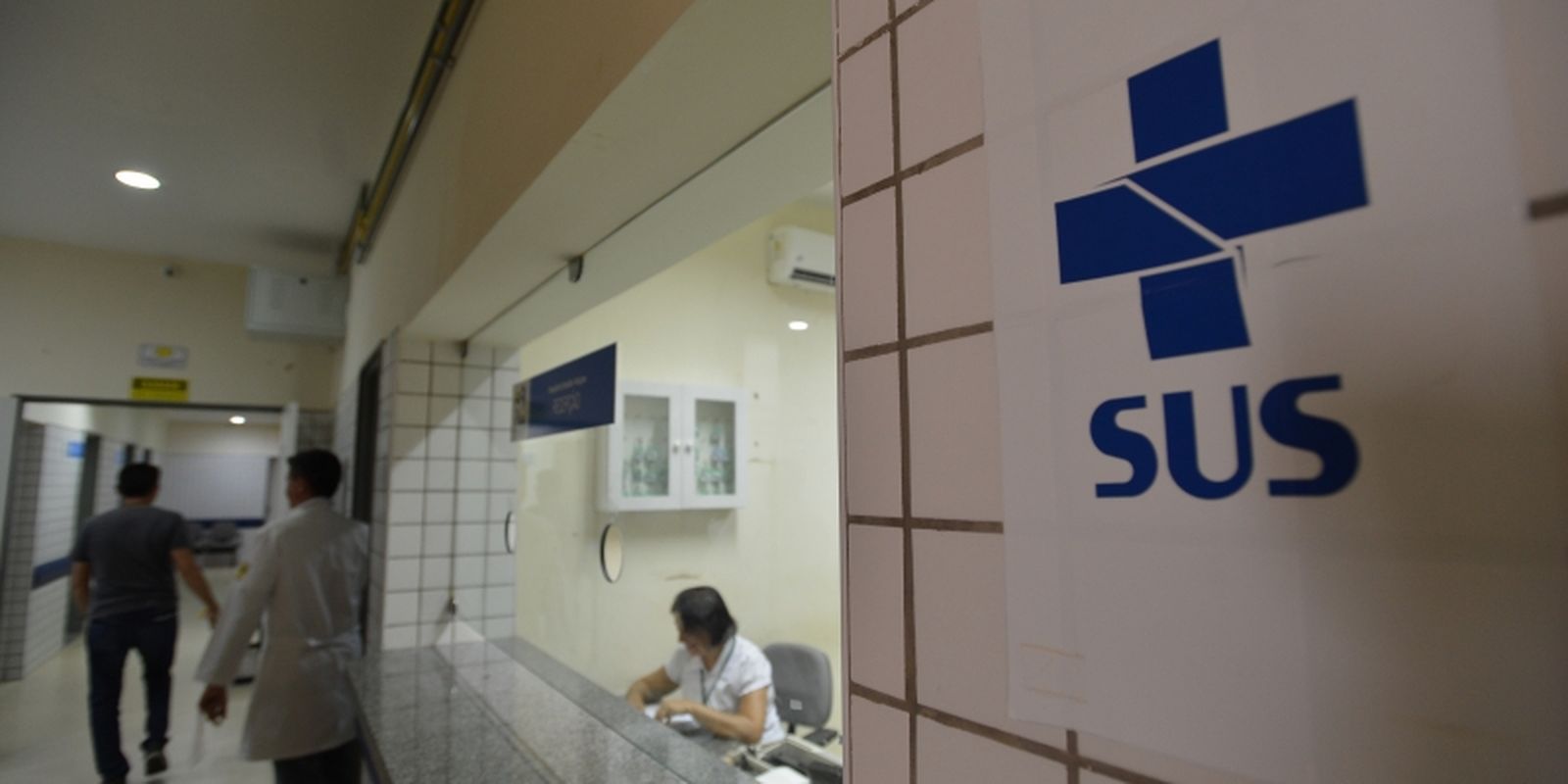The city of Rio de Janeiro is planning a new program to combat obesity that will offer medications such as semaglutide and liraglutide, initially indicated for controlling diabetes, but which became popular due to their weight loss effect.
According to the Municipal Health Department, this should be done from 2026, but a working group has already been created to plan the best strategy for using the medicine.
Despite having caused some uproar, the Rio initiative is not new. Liraglutide is already used in cities in Goiás, Distrito Federal and Espírito Santo, and is also part of treatment protocols at the State Institute of Diabetes and Endocrinology of the state of Rio de Janeiro (Iede), Hospital das Clínicas and Instituto da Criança from the University of São Paulo.
There is still no indication of incorporation of these substances into the Unified Health System (SUS).
In 2023, the manufacturer Novo Nordisk asked the Commission for the Incorporation of Technologies into the SUS (Conitec) to evaluate the inclusion, but the opinion was negative. Despite studies showing the drug’s efficiency, the budget impact estimate was considered high: R$12.6 billion over 5 years.
But this scenario could change in the near future. After the patent fell, other laboratories began to produce medicines based on liraglutide, and, in December last year, the National Health Surveillance Agency authorized the use in Brazil of the first two of them, produced by EMS. With more competition, the tendency is for the price of the medicine to decrease.
Semaglutide remains Novo Nordisk’s exclusive patent until March 2026 and, for now, is not used by any public service. In pharmacies, the price of ampoules for one month of use varies from R$800 to R$2,000, depending on the dosage.
Liraglutide is a little cheaper and can be purchased for around R$700, but requires daily application, while semaglutide must be injected once a week.
The vice-president of the Brazilian Society of Endocrinology and Metabology, Karen de Marca, says she is optimistic about the adoption of medicines in Rio’s public network and the possibility that this will inspire other public entities in the same direction.
She is also technical-assistance director at Iede, one of the public units in Brazil that already uses liraglutide in some patients.
“These medications are from the class of GLP-1 agonists. In studies it was noticed that it achieved good glycemic control and also helped in maintaining insulin levels. It is a very complete molecule, we have receptors for this molecule in several organs of the body, from the central nervous system, where it sometimes helps with the satiety component, which is why we began to realize that in addition to controlling diabetes, it could also be useful for patients with obesity”, explains the specialist.
The vice-president of SBEM considers that the adoption of these medicines in the public health service is an interesting strategy also due to studies that demonstrate a reduction in mortality from cardiovascular disease, and the occurrence of chronic diseases such as high blood pressure.
“When we think about introducing a medication into the Unified Health System, you have to think about the real benefit, who it serves, how much it costs and what it will save. So if we think that it is a very complex molecule, that can improve glycemic control, control weight and achieve weight loss of up to 25%, with cardiovascular benefits, which is the main cause of death in diabetic patients with obesity, is very interesting. reduces costs per cardiovascular hospitalization, by complications from diabetes, from amputation, cost of medicine for hypertension, for kidney disease.”
This is Rio City Hall’s main justification for adopting the medicine. Municipal health secretary Daniel Soranz believes that it could end up representing savings for public coffers:
“Today, Rio de Janeiro spends more or less R$130 million per year on hospitalizations resulting from problems with diabetes and obesity. The expectation is that, with semaglutide and a broader program to combat obesity, we will be able to reduce these hospitalizations and can actually advance more and more in improving the quality of life”.
According to the secretary, City Hall is already in contact with four laboratories: Novo Nordisk, and three others that should start manufacturing the medicine once the patent is broken.
Soranz guarantees that the medication will be offered within an integrated treatment: “the clinical design of patient monitoring will be from the Family Clinics. The family doctor will define the therapeutic protocol. Whether they will need to take medication, diet, exercise, if you need bariatric surgery.”
For the vice-president of the Brazilian Society of Endocrinology and Metabology, the ideal would be for patients to have access to multidisciplinary treatment centers: “a complete place, where you have a physical educator, nutritionist, psychologist, psychiatrist, endocrinologist, general practitioner who can follow this treatment. I really see it as a necessity to have a multidisciplinary team, because obesity is multifactorial. Medication treats obesity, but it does not treat the reasons that led to weight gain.”
The endocrinologist also warns that public programs need protocols to ensure the best use of this strategy: “Here at Iede, for example, we are dispensing Liraglutide for patients with severe obesity, who have not responded to other medications, who have other comorbidities And given this situation, it’s worth investing in more expensive medication.”
Even the leaflets of the medications available in Brazil – Saxenda, which contains liraglutide, and Wegovy, which contains semaglutide – indicate that they are indicated for use by adults with a body mass index above 30 kilos per square meter (kg/m²), which characterizes obesity, or 27kg/m2, in the overweight range, as long as the patient has a health problem related to this condition.
The medications can also be used by adolescents over 12 years of age who are obese and weigh at least 60kg. In all cases, the recommendation is that the medication be associated with diet and physical exercise.
Aesthetic use
The semaglutide-based medicine with the most famous brand name, Ozempic, does not have a leaflet recommendation for use against obesity, but only for adult patients with uncontrolled type 2 diabetes.
Still, the effectiveness of the substances has attracted many people who do not fit the criteria, but want to lose weight for aesthetic reasons. The sale of all these medicines requires presentation of a medical prescription, but as the prescription is not retained, it is possible to purchase without a recommendation. Anvisa is discussing whether they should be placed in the same category as antibiotics, which would force pharmacies to keep a copy of the prescription, with the buyer’s identification.
In December, the Brazilian societies of Endocrinology and Metabology and Diabetes and the Brazilian Association for the Study of Obesity and Metabolic Syndrome released an open letter defending the withholding of revenue for the sale of GLP-1 agonists. In the text, they say that “over-the-counter sales, despite being irregular, are frequent” and that “indiscriminate use raises concerns about the health of the population and access for those who really need the treatment.”
Karen de Marca reinforces that people who take these medications without supervision often do not take the appropriate dosage and are at greater risk of suffering adverse effects such as nausea, bloating, constipation or diarrhea. Incorrect use can also worsen psychological and eating disorders.
“A person who is fixated on self-image, on staying thin, can sometimes end up using an excessive dose of medication without any type of indication. We see that there is also a loss of lean mass that can trigger a process of sarcopenia. It can also have a dependency, in the sense of not being able to see yourself without that medication, because you need to feel thin”.
Psychologist Flavia Ferreira da Silva reinforces the warning. She began using the medications after being diagnosed with pre-diabetes and liver stenosis, in addition to obesity. But always with medical and psychological support.
“It’s important to deal with anxiety and, sometimes, body dysphoria, because you change your body very quickly and need to understand that this new body is in process, and a lot of people can’t keep up with the image, they become very thin thinking that they are still You need to lose more. And you’re also ashamed of losing weight with medication like this, as if it were a failure, because we can’t do it alone, with exercise.”
When she started treatment, Flávia weighed 98kg and today weighs around 70kg: “Being fat is not a problem, but chronic obesity is. Even if you don’t have anything in the exams, you have issues with your spine, knees, joints. Today all My rates are good, sugar, cholesterol.”
But Flávia’s experience is not universal, which reinforces the need for individualized monitoring. Computer engineer Danilo Vidal Ribeiro has type 2 diabetes and started using semaglutide to try to better control his glucose levels and also lose weight, but the treatment was unsuccessful.
“I used it for about two months, but I had a lot of pain in my abdomen, it felt like my stomach was swollen, always full and it hurt a lot. I even spent a night in the emergency room to see if there was anything extra that could be worse. I did tests, but they didn’t show anything.”
Today, with the use of another medication and changes in diet, Danilo is managing to keep the disease under control and issues a warning to all people seduced by the promise of easy and quick weight loss:
“Any medicine that you use without medical assistance to try to achieve the goal of losing weight, or even to control diabetes, you run a great risk. And not only will you get sick, as happened in my case, but you can have serious complications for your health. Indiscriminate use is certainly worrying.”
















